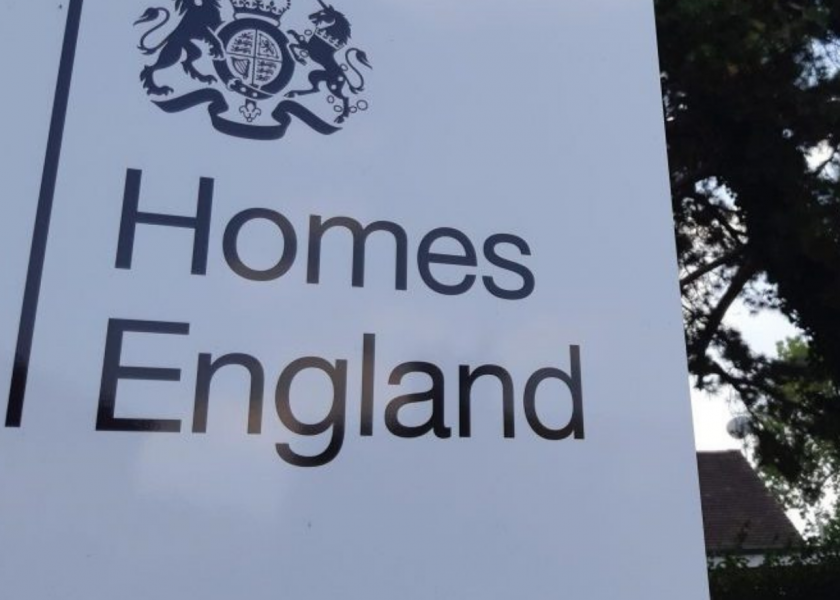A new era for housing
28/08/2021

Recently, the UK government reaffirmed its commitment to building more homes, as well as working to reshape the nation’s economy. In this article, Andrew Carpenter, Chief Executive of the Structural Timber Association (STA) explains that whilst advancing this agenda, those involved in the process must also respect an existing commitment to achieving Net Zero emissions by 2050. Andrew goes on to detail how recent publications, such as the ‘Government Response to the Housing, Communities and Local Government Select Committee Report on the Long-term Delivery of Social and Affordable Rented Housing’, identify how both of these goals can be achieved more easily through a greater commitment to modern methods of construction (MMC).
In its new report, Homes England identifies the potential for MMC to be “significantly more productive than traditional building methods; allowing homes to be built more quickly, addressing labour and skills shortages and improving the quality, consistency and energy efficiency of newly built homes.” As an organisation at the forefront of promoting MMC amongst the sector, we have long recognised the potential of these significant benefits. In particular, we believe that timber frame and structural insulated panel (SIP) construction offer the most accessible options.
During the last few years, both MMC techniques have emerged as standout options in the housebuilding sector. The innovative building approaches enable the rapid construction of homes, whilst also delivering exceptional performance in terms of thermal and energy efficiency. Likewise, both techniques have strong environmental credentials, which makes them ideal in helping the UK to hit its target of net zero carbon emissions by 2050. Currently, the construction sector contributes around 38% of Britain’s total carbon dioxide emissions, so making this change could have a big impact.
For example, thanks to its inherent airtight and highly insulated construction, SIPs buildings are able to significantly reduce energy usage within a home. When considered alongside the UK’s commitment to building 300,000 new homes per year, it’s easy to see how important this MMC could be in helping to reduce overall carbon consumption across the nation. Of course, a significant reduction in energy usage isn’t only beneficial for the broader environment, but will also help homeowners to reduce the money they spend each month on bills.
Similarly, timber frame construction also offers housebuilders and developers a simple way to build long-lasting, durable homes in a sustainable manner. For context, concrete is currently responsible for between four to eight per cent of the world’s total carbon dioxide emissions. Therefore, any new techniques that are able to reduce usage of the material must be seriously considered.
Another benefit of timber frame construction is that it offers an effective way to sequester carbon dioxide out of the atmosphere. During its life, timber consumes carbon dioxide from the atmosphere. This embodied carbon will remain stored in the timber, even when the material is processed for use within buildings. As more timber forests are planted to support the use of timber across industries, such as construction, more carbon is subsequently captured and removed from the atmosphere. As such, pushing for the further adoption of structural timber construction ranks amongst the most sustainable options available to the sector.
Of course, it’s still important for homes built via MMC to deliver in other areas, aside from their exceptional environmental performance. Thankfully, as the report from Homes England identifies, such solutions can also enable a more rapid construction process, which could prove invaluable as the nation looks to tackle its current housing shortage. Additionally, certain techniques, such as SIPS and timber frame construction are ideal in creating homes with excellent levels of thermal and energy efficiency. This outstanding performance is due to the volumes of insulation provided as part of the structure.
Right now, Homes England is monitoring the construction of around 1,800 developments across the country, via various means of MMC production. Once completed, the organisation will have long-term, in-depth and verifiable data regarding the different available methods. At the STA, we’re awaiting the findings with bated breath, but feel confident that those methods commonly adopted for housing by our members, most notably SPS and timber frame construction, will emerge as the standout choices. Until then, we will continue to support those promoting such techniques in the best ways we can and help the industry as it moves forward into a new era of building practices.
To read Homes England’s new report, please visit: https://www.gov.uk/government/news/homes-englands-mmc-research-study-takes-shape